By Leah Ollman
If Masaomi Yasunaga’s astonishing ceramic sculptures were parts of speech, they would be at once both nouns and verbs. They are extraordinary objects, tactile things with insistent, engrossing physicality. They are also so process-oriented, so action-driven, that they seem in some sort of continuous temporal motion, existing simultaneously in multiple tenses: present and past, conditional and subjunctive.

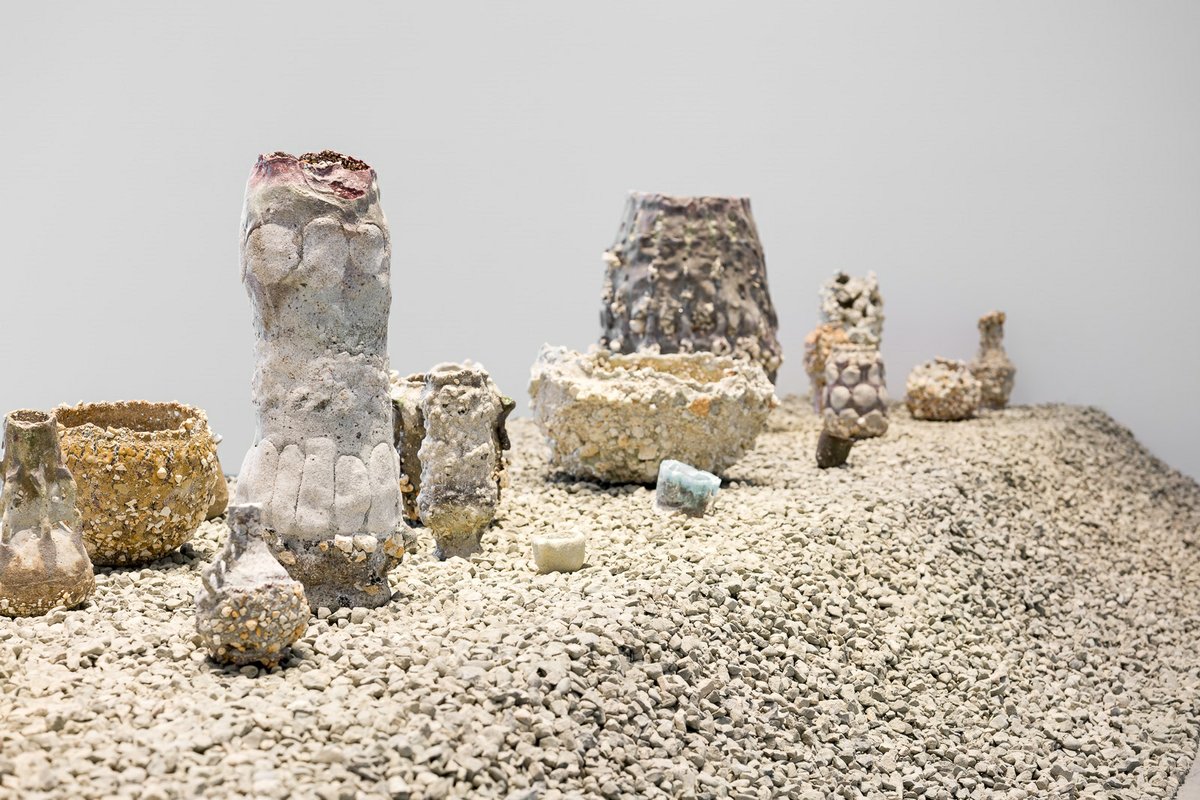
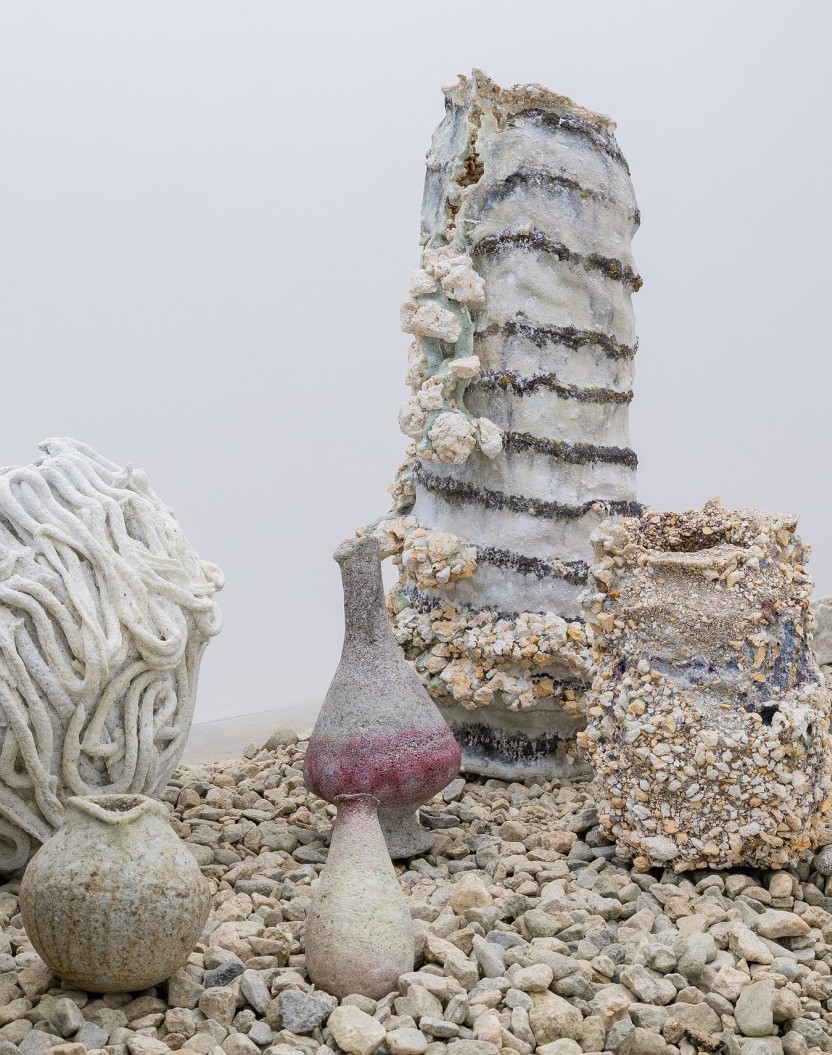
Some 30 vessels rest on a raised bed of gravel running the length of Nonaka-Hill gallery in L.A. The installation evokes a raised tomb, reinforcing an impression of the works as excavated, unearthed. Many have surfaces encrusted with stone bits. One large bowl appears entirely comprised of rubble, its walls a thick, white, rocky crust, pocked with voids and graced with passages of glassy jade and violet. Other pieces are more delicate—a little cup, for instance, with walls like a fine, crisp shell, nests within another, just slightly larger, to yield an intimate meditation in umber and taupe.
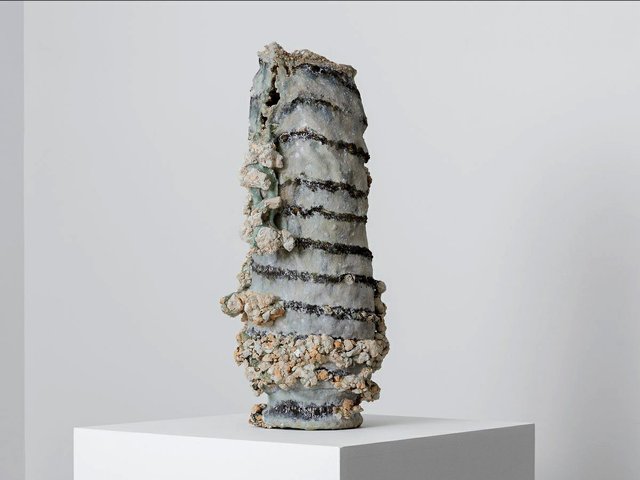
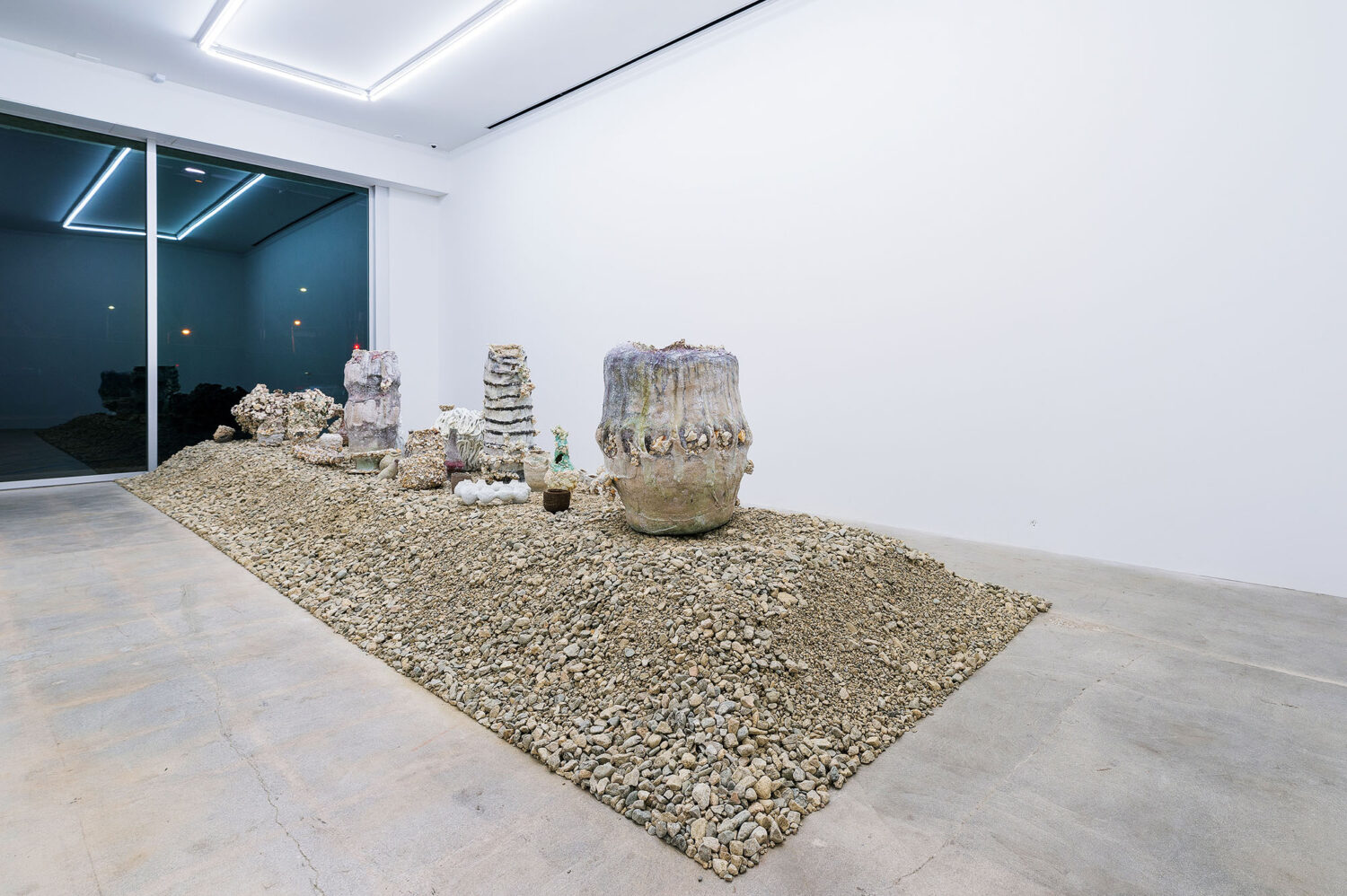
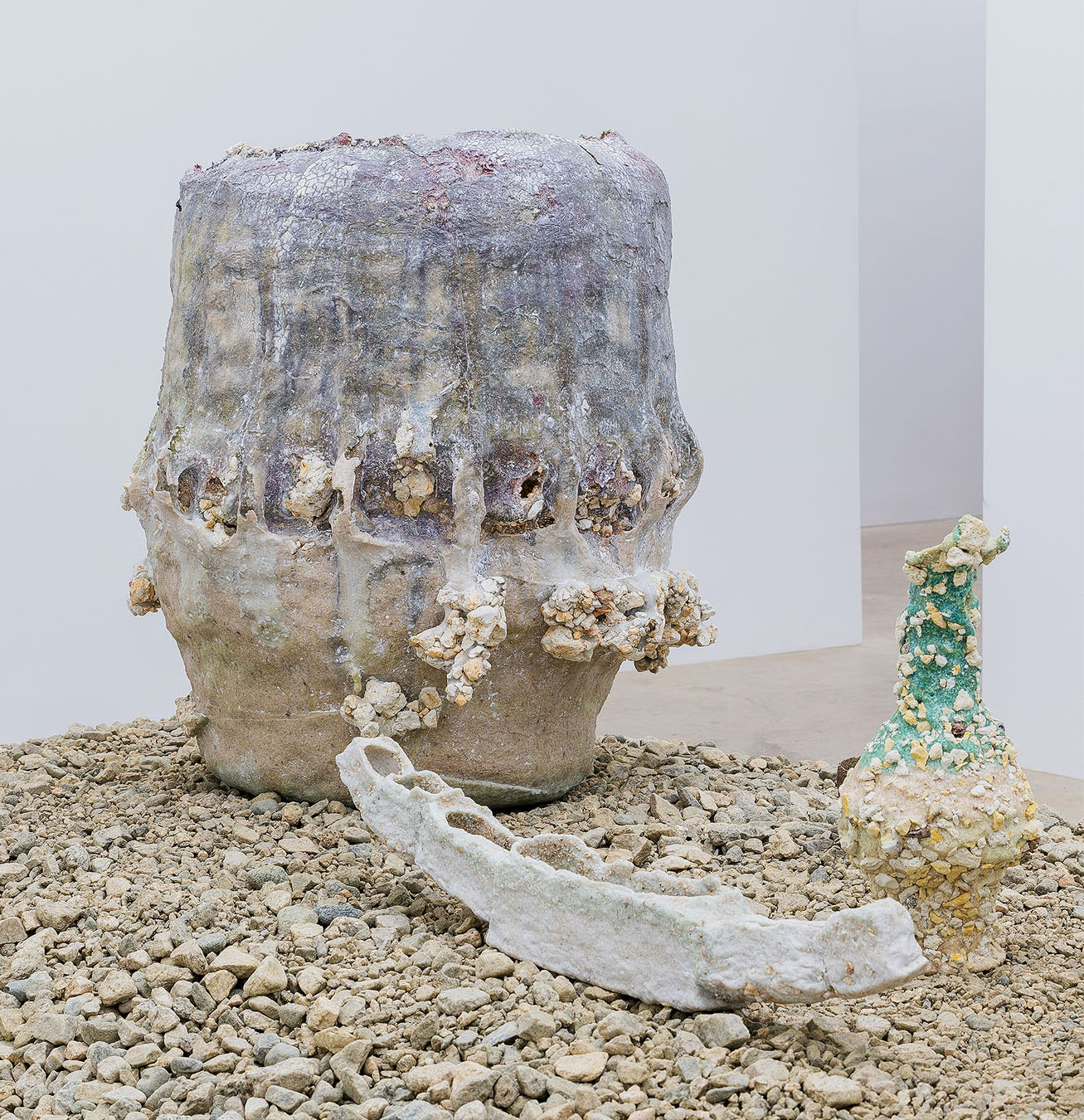
For every rugged and raw gesture, there are others with roots in refined tradition, jars with graceful silhouettes and finely shaped handles. Relics from ancient Rome come to mind—urns and oil lamps. Across a long shelf in the adjoining space parades a lyrical little menagerie: vessels in the form of birds, a turtle, perhaps a snail. Nearby sits a stunning, small cup of aqua glass with a white-rimed lip and grit-barnacled base, suggesting oceanic salvage and organic decay. Yasunaga titles this piece, and several others, “Sai,” meaning to break or collapse. “Tokeru Utsuwa,” defined as melting vessel, is the name of a few other pieces. The forces of erosion act here as a kind of generative impulse, unmaking as inspiration to make.
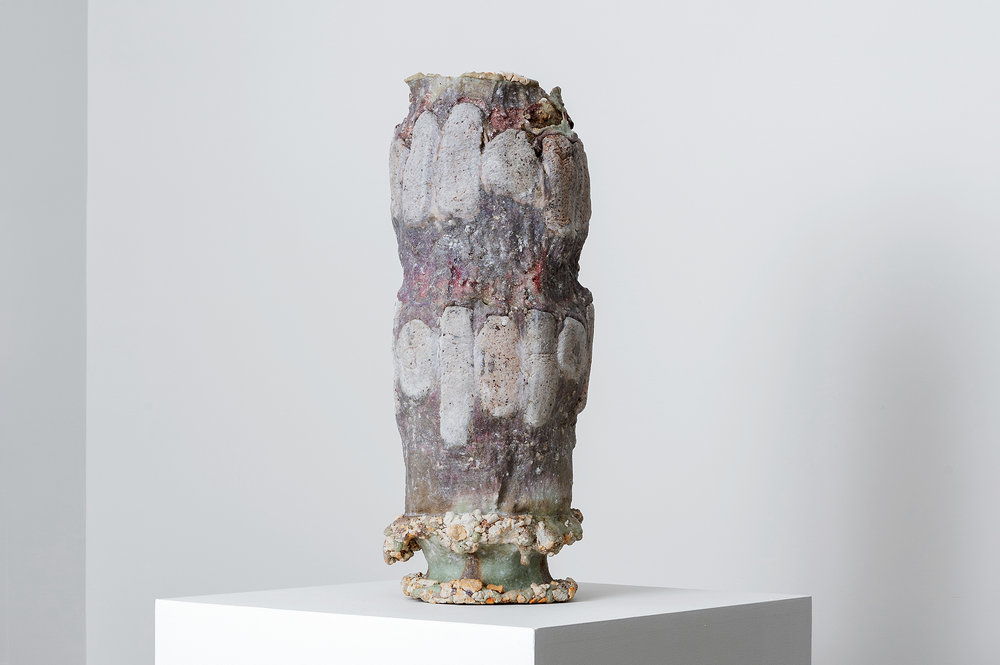
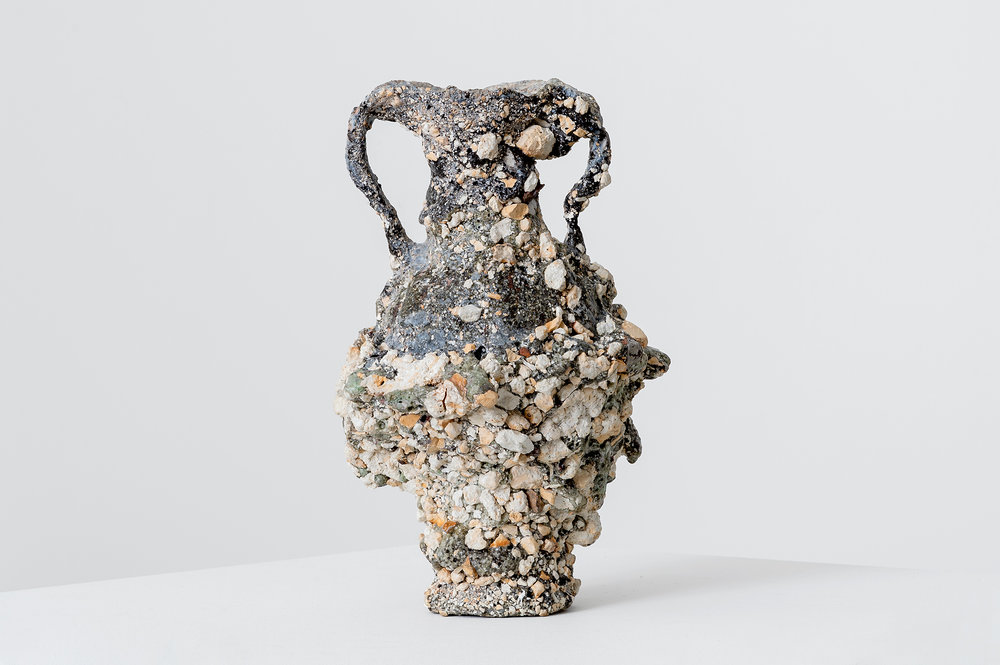
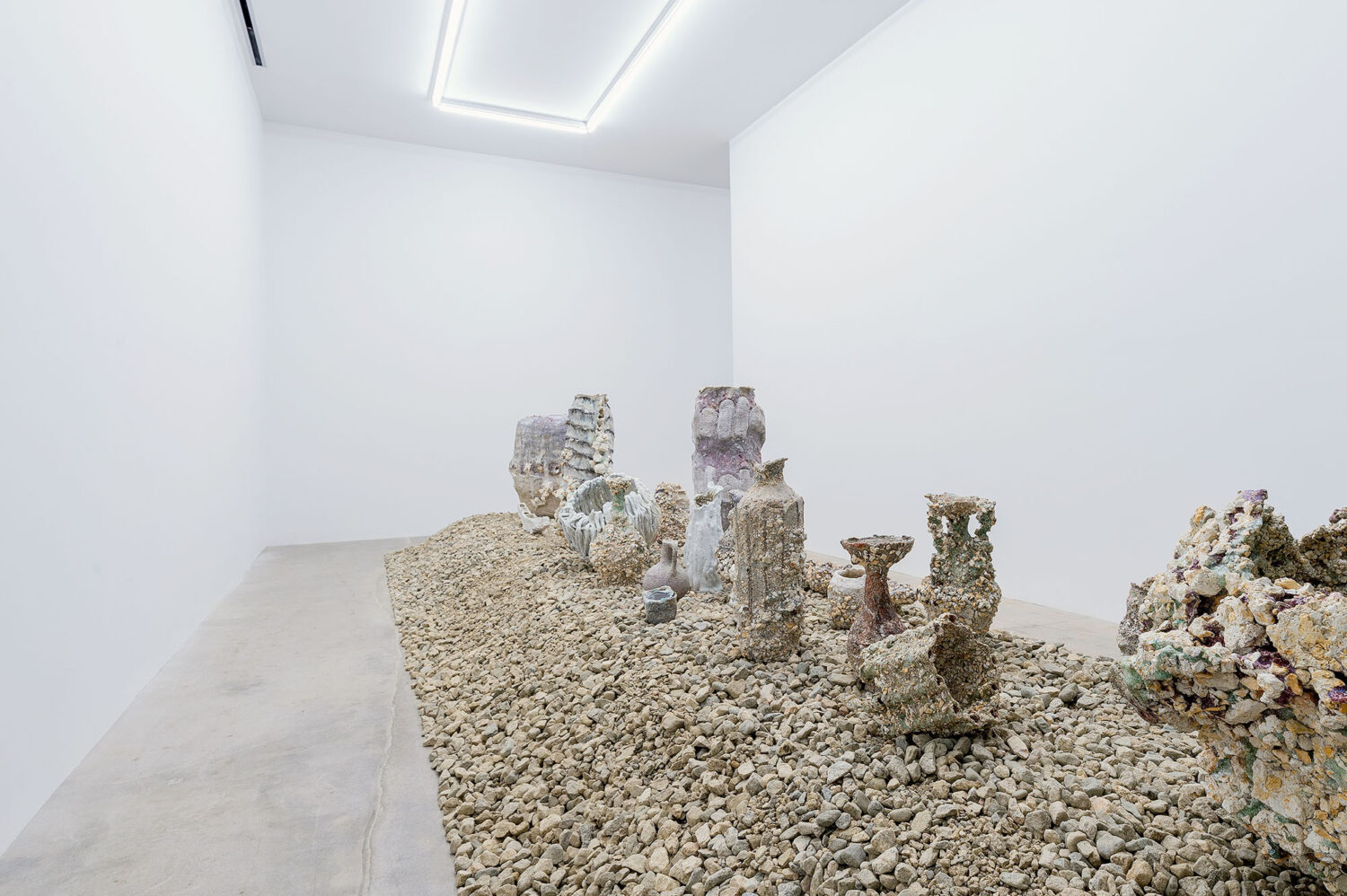
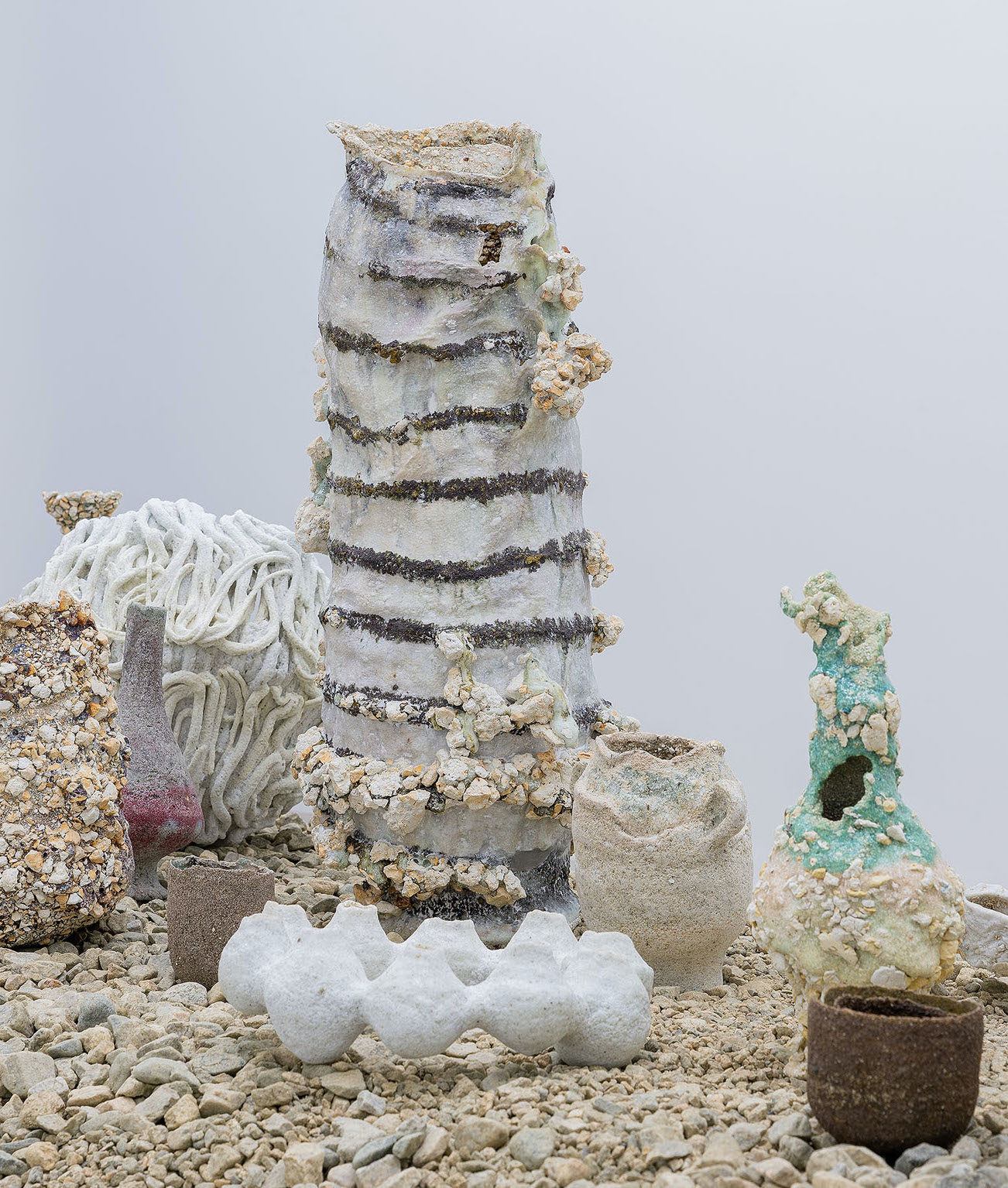
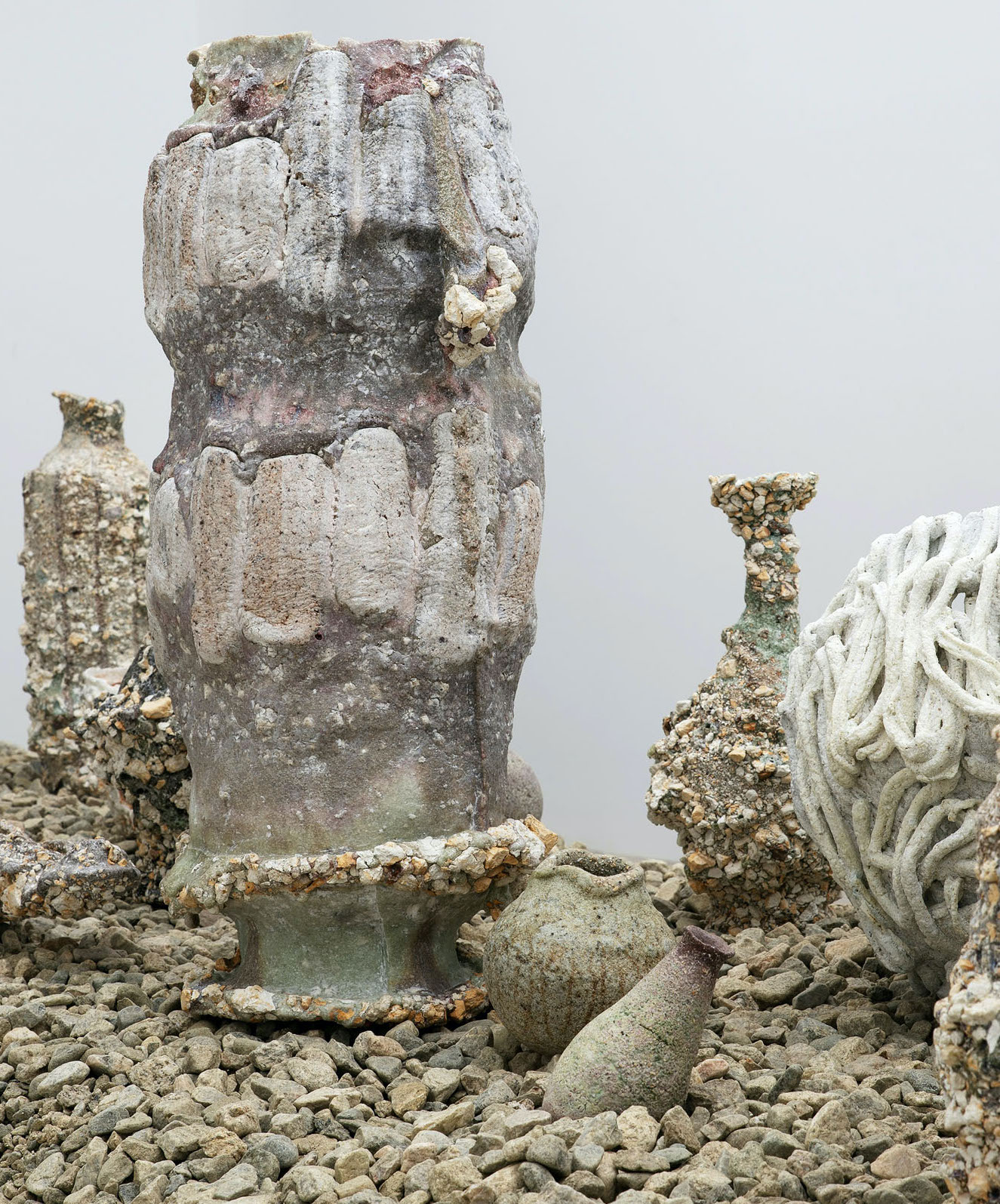
Material transformation is fundamental to ceramics, but what Yasunaga does with clay, glaze, ash and glass is radically inventive as well as profuse in metaphorical resonance. Many pieces are identified as made only of glaze. Through a process involving burial in sand, soil or stone, Yasunaga turns what is conventionally used as a skin to sheathe a clay body into a body itself, both bone and flesh. Extracting the works from the kiln and placing them atop a bed of gravel furthers the notion of reciprocity between what is below ground and what is above, between archaeological time’s expansive breadth and the immediate now of touch, utility and sensual reverie. The work feels at once primal and urgent.
Text and photographs courtesy Nonaka-Hill gallery in L.A
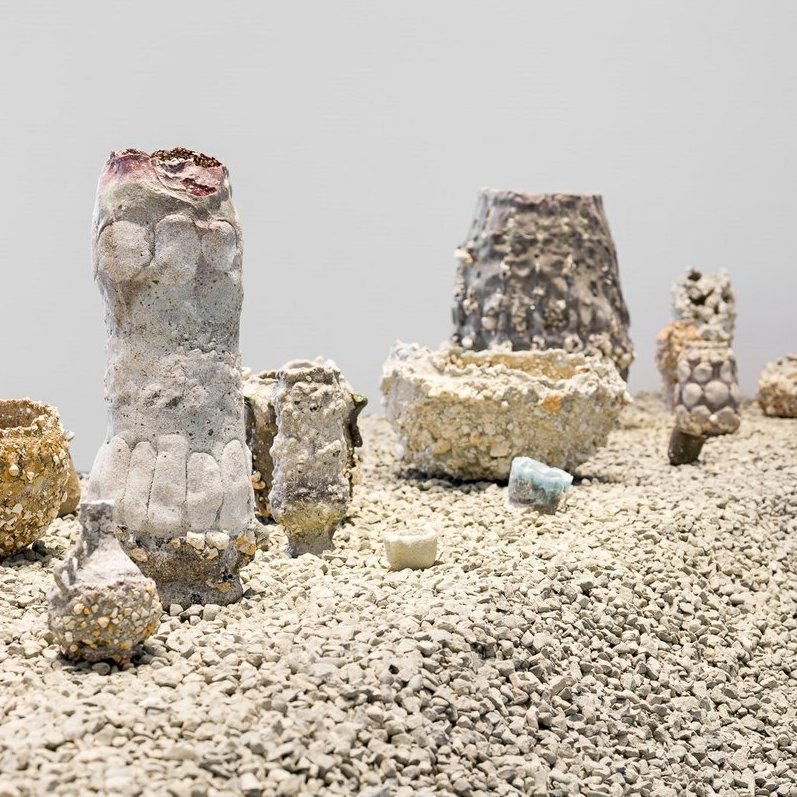
Are these things organised to be displayed as some sort of interior decoration, like fish in a fish tank, in someone’s house, maybe an art gallery or with each article having the possibility to be displayed alone? The accompanying dialogue is so much pabulum, aye. Like all pretentious art, useless. Aesthetically it would have been better to have the gravel pile casually piled up like the asymmetrical art works.